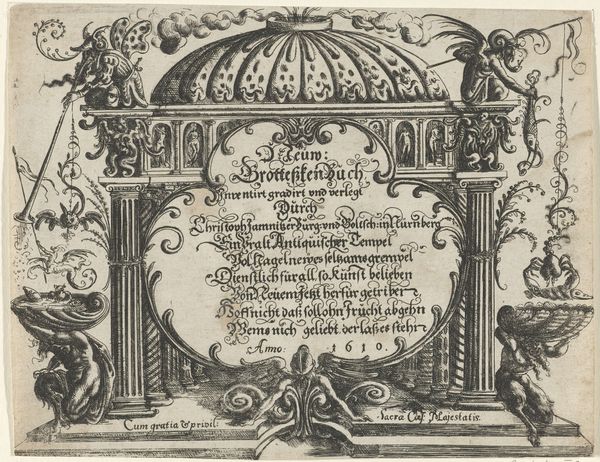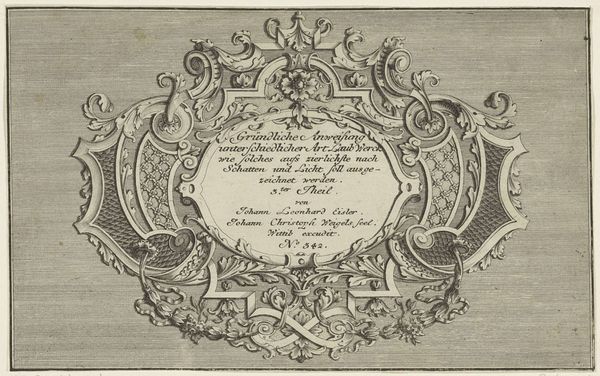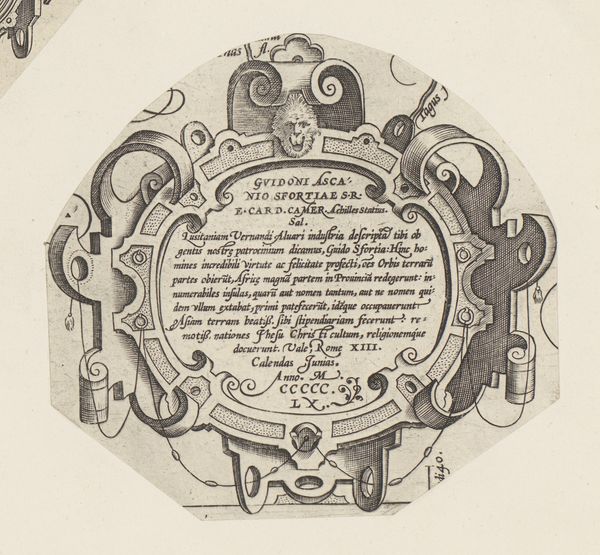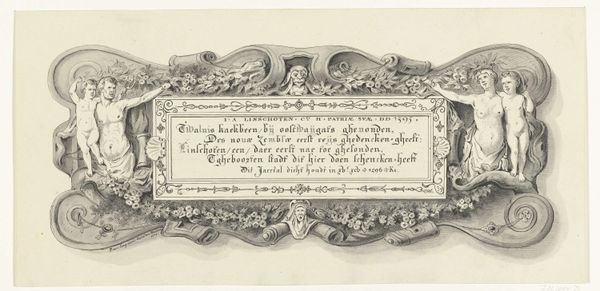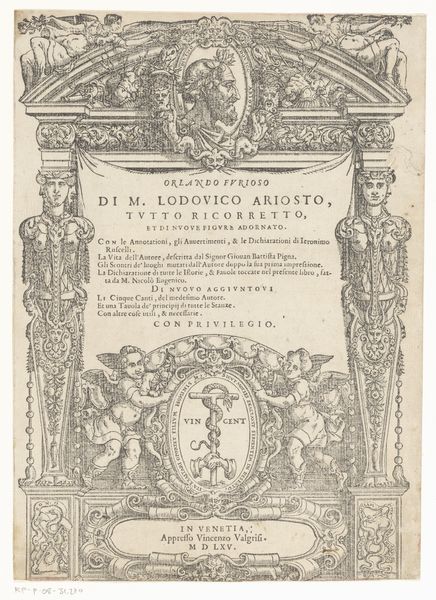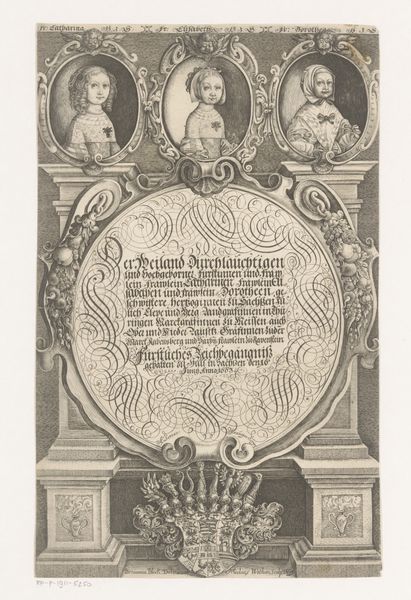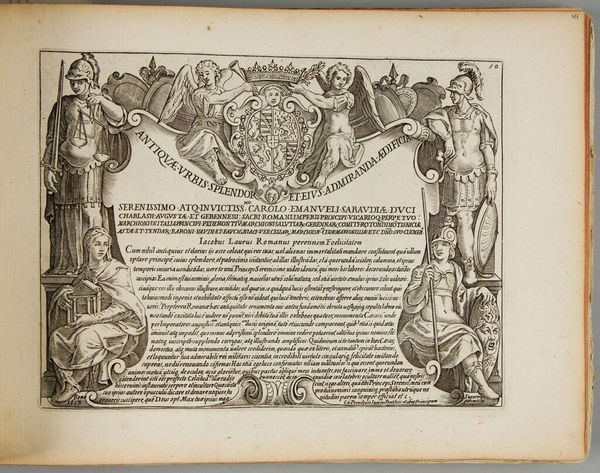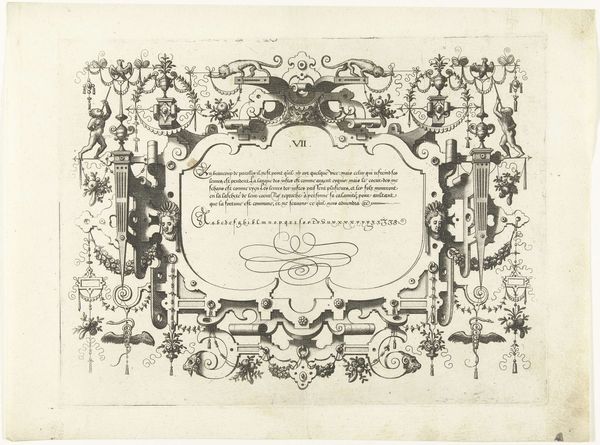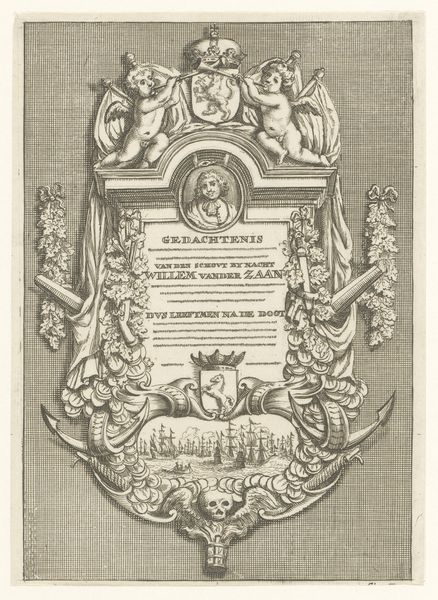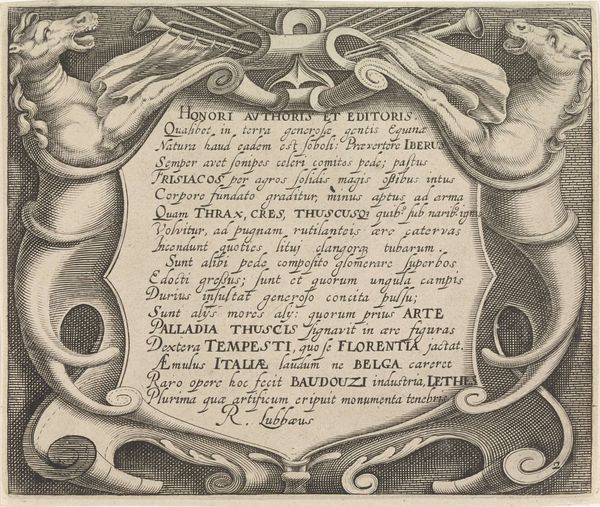
drawing, print, paper, engraving
#
drawing
#
baroque
# print
#
paper
#
engraving
Dimensions: 162 × 246 mm (plate)
Copyright: Public Domain
Curator: Let’s turn our attention to this detailed engraving entitled “Unterschiedliche Neue Inventionen,” which roughly translates to “Various New Inventions." Created before 1697, this print is the work of Johann Andreas Pfeffel I, and we are fortunate to have it here at The Art Institute of Chicago. Editor: My initial impression is one of opulent delicacy. It's teeming with ornate embellishments – a sense of refined indulgence. There's almost a suffocating richness about it; how would you characterise its visual language? Curator: Its Baroque aesthetic relies heavily on symbolic language typical of the era. Note the symmetry and balance alongside elements like floral arrangements and birds – prevalent symbols representing nature, grace, and even divine blessings. Consider this artwork in the context of the late 17th century. The intricate designs suggest a desire for elaborate adornment and displays of wealth within courtly society. This engraving provides insight into the cultural values and aesthetic preferences of the period, emphasizing how art served to reflect social status. Editor: Interesting. So, while visually harmonious, it also seems to broadcast hierarchies. Even the architecture framing the image hints at social stature, with a clear elevation and perspective emphasizing the distinction between subject and observer. The man atop the design seemingly stares down on the text itself. Can we determine who was this initially produced for? Curator: The German script at the artwork’s core suggests it was likely intended to showcase designs for jewelry, adornments, and trinkets to attract affluent clientele. By commissioning it, Pfeffel made deliberate strategic moves. "Hof-Kupfferstecher," identifies him as the Imperial Court Engraver. This title itself highlights the artist’s affiliation with the upper echelons of society, leveraging associations to gain recognition and customers. The engraving thus functioned as a luxurious advertisement—a testament to its adaptability in capturing new markets through existing symbolism. Editor: I see it now, a demonstration of wealth, not simply in its subject matter but in the visual complexity. To possess items depicted must've meant embracing a persona – a reflection of privilege broadcast throughout their person. In that way, something like this served as both template and silent enforcer for a socio-political structure in place. It reinforces established values and invites participants while tacitly excluding those who fall outside its scope. Curator: Precisely. This isn't just art; it is a material document reflecting the power relations of its time. Now, examining the psychological impact through sustained visual culture, there may exist interesting tensions. What once might be emblems and celebration become triggers through historic reflection of an unsustainable stratification of community that deserves our critical, open reflection. Editor: Well, exploring these intersections truly adds layers to our understanding of art's lasting cultural role, right? It encourages us to probe both their symbolic potential and potential reverberations. Curator: A lens to view our past... and perhaps even our present.
Comments
No comments
Be the first to comment and join the conversation on the ultimate creative platform.
